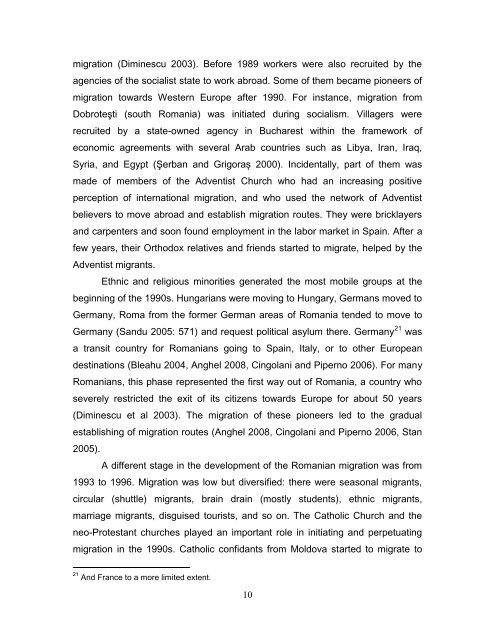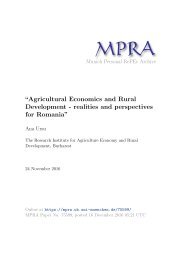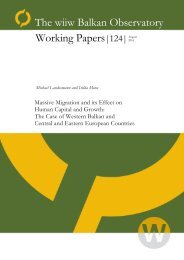You also want an ePaper? Increase the reach of your titles
YUMPU automatically turns print PDFs into web optimized ePapers that Google loves.
migration (Diminescu 2003). Before 1989 workers were also recruited by the<br />
agencies of the socialist state to work abroad. Some of them became pioneers of<br />
migration towards Western Europe after 1990. For instance, migration from<br />
Dobroteşti (south Romania) was initiated during socialism. Villagers were<br />
recruited by a state-owned agency in Bucharest within the framework of<br />
economic agreements with several Arab countries such as Libya, Iran, Iraq,<br />
Syria, and Egypt (Şerban and Grigoraș 2000). Incidentally, part of them was<br />
made of members of the Adventist Church who had an increasing positive<br />
perception of international migration, and who used the network of Adventist<br />
believers to move abroad and establish migration routes. They were bricklayers<br />
and carpenters and soon found employment in the labor market in Spain. After a<br />
few years, their Orthodox relatives and friends started to migrate, helped by the<br />
Adventist migrants.<br />
Ethnic and religious minorities generated the most mobile groups at the<br />
beginning of the 1990s. Hungarians were moving to Hungary, Germans moved to<br />
Germany, Roma from the former German areas of Romania tended to move to<br />
Germany (Sandu 2005: 571) and request political asylum there. Germany 21 was<br />
a transit country for Romanians going to Spain, Italy, or to other European<br />
destinations (Bleahu 2004, Anghel 2008, Cingolani and Piperno 2006). For many<br />
Romanians, this phase represented the first way out of Romania, a country who<br />
severely restricted the exit of its citizens towards Europe for about 50 years<br />
(Diminescu et al 2003). The migration of these pioneers led to the gradual<br />
establishing of migration routes (Anghel 2008, Cingolani and Piperno 2006, Stan<br />
2005).<br />
A different stage in the development of the Romanian migration was from<br />
1993 to 1996. Migration was low but diversified: there were seasonal migrants,<br />
circular (shuttle) migrants, brain drain (mostly students), ethnic migrants,<br />
marriage migrants, disguised tourists, and so on. The Catholic Church and the<br />
neo-Protestant churches played an important role in initiating and perpetuating<br />
migration in the 1990s. Catholic confidants from Moldova started to migrate to<br />
21 And France to a more limited extent.<br />
10




